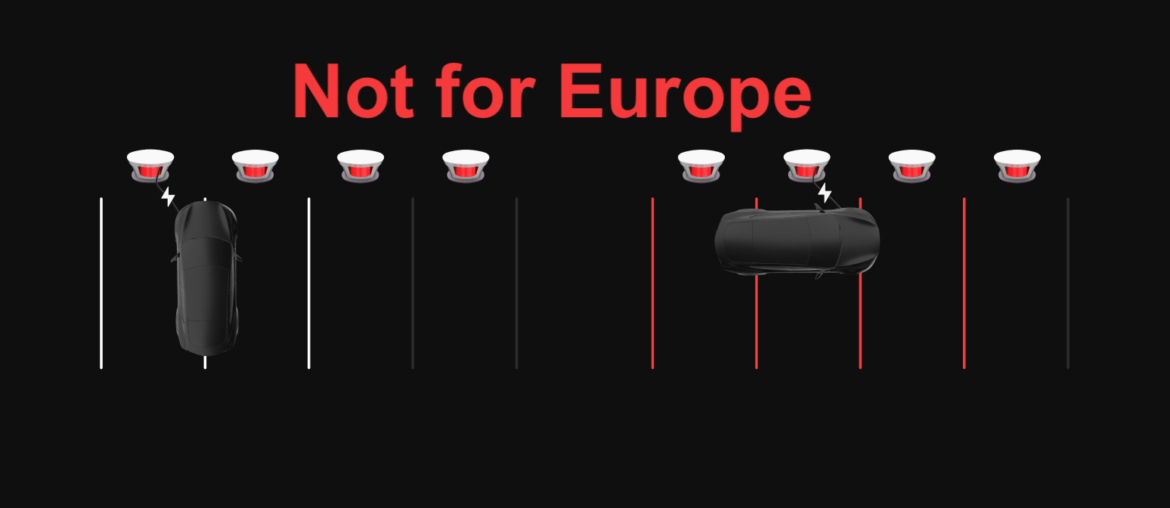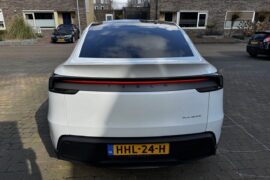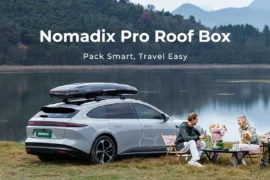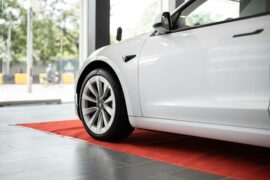Tesla’s Supercharger network is one of the most extensive, affordable and reliable charging solutions available, but its design primarily caters to Tesla vehicles. This creates a significant hurdle for drivers of other EV brands who want to tap into this fast-charging powerhouse. Enter an exciting innovation: the Tesla Supercharger (NACS) extension cable designed for non-Tesla EVs.
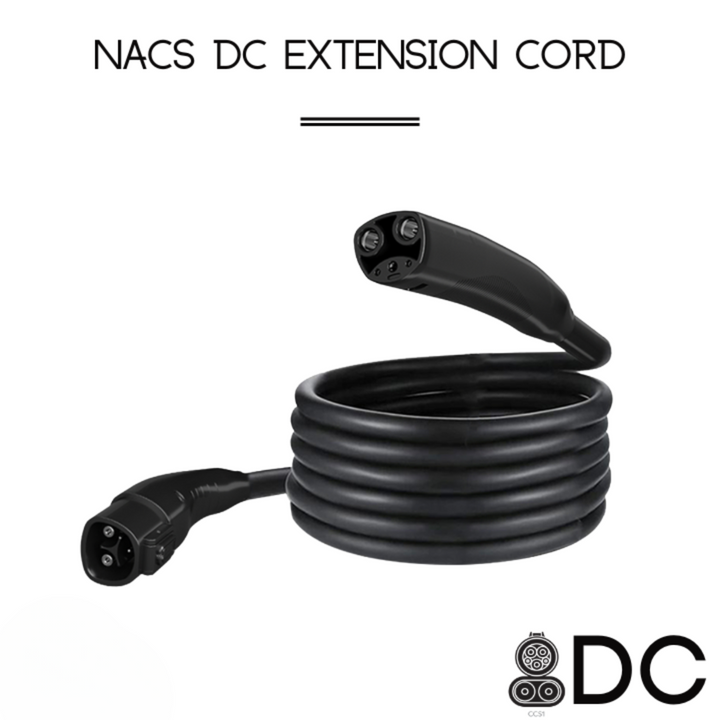
The Problems:
1. The Issue with NACS in Europe
While NACS is expanding in North America, Europe remains committed to the CCS2 (Combined Charging System) standard, making a transition both costly and complex. Most public charging stations are built around CCS2, and Tesla’s limited CCS2 support at its Superchargers further restricts access for non-Tesla EVs.
A key technical challenge is NACS’s incompatibility with Europe’s three-phase (Phase 3) power system, which enables faster AC charging (11kW–22kW) at home and in public spaces. Since NACS is optimized for single-phase charging, this leads to several inefficiencies:
- Slower AC Charging: NACS-equipped EVs charge at lower speeds than CCS2 vehicles.
- Reduced Public Charging Efficiency: Many European AC chargers rely on three-phase power, limiting NACS usability.
- High Adaptation Costs: Retrofitting the grid for NACS would require significant investment, making widespread adoption impractical.
Teslas in Europe use the CCS2 (Combined Charging System) for DC fast charging, as it is the EU standard. Early Tesla models used Tesla’s proprietary Type 2 connector for both AC and DC charging, but later models have CCS2 compatibility.
2. Charging Limitations for Non-Tesla EVs
Tesla’s North American Charging Standard (NACS) has been adopted by several automakers, making access to the Supercharger network increasingly possible for non-Tesla EV owners. However, there’s a catch many Tesla charging stations are designed with specific vehicle positioning in mind.
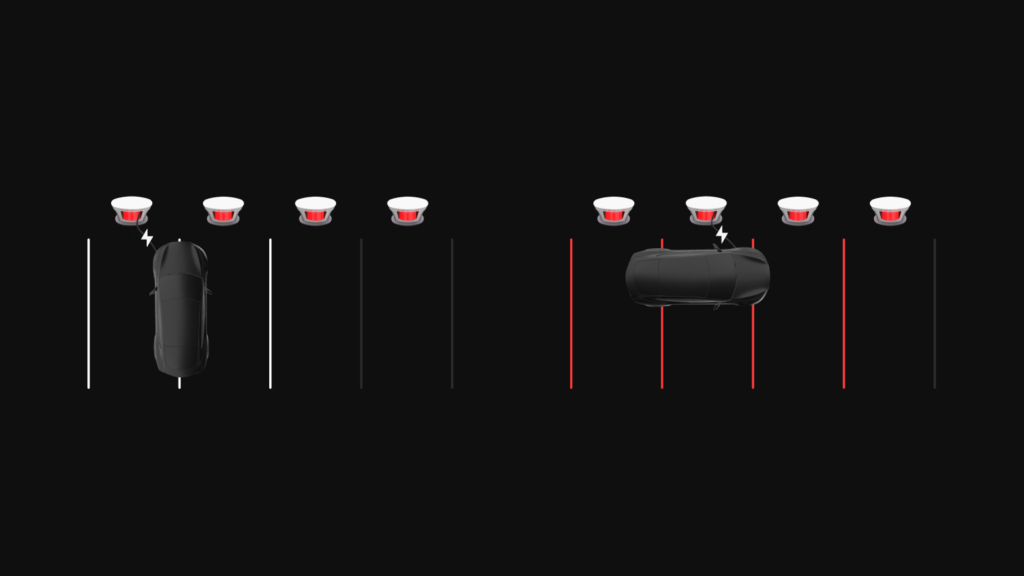
Tesla themselves describe the challenge like this; “Most Supercharger cables at NACS Supercharger sites should be able to reach your EV charge port, however, in some cases you might have to park over the line in order to charge comfortably. Avoid parking diagonally to reach the cable and try to obstruct as few charge posts as possible. Charge port locations vary by EV model, which requires cable sharing between adjacent stalls at many sites. Tesla is rapidly deploying our latest V4 Supercharger post which reaches all EVs in the same Supercharger stall. Additionally, we encourage all vehicle manufacturers to standardize charge port locations to the rear driver side or front passenger side.”
This doesn’t work
So yeah this doesn’t work. The misalignment causes some read headaches especially when it’s busy and every other stall has a correctly parked car beside it. With our test vehicles we have found that in Europe Tesla Superchargers around big cities and airports are so busy that you have about a 20% change of successfully hooking-up.
The Solution: An Extension Cord
An American company called ‘A2Z EV‘ known for making EV adapters has announced a practical workaround; a robust extension cable that bridges the gap between the Supercharger cable and an EV’s charging port.
This means that non-Tesla EV owners can finally access Tesla’s charging network without struggling with awkward vehicle positioning or physical barriers. It’s a simple but powerful innovation that could significantly enhance the usability of existing infrastructure for a broader range of EV drivers.
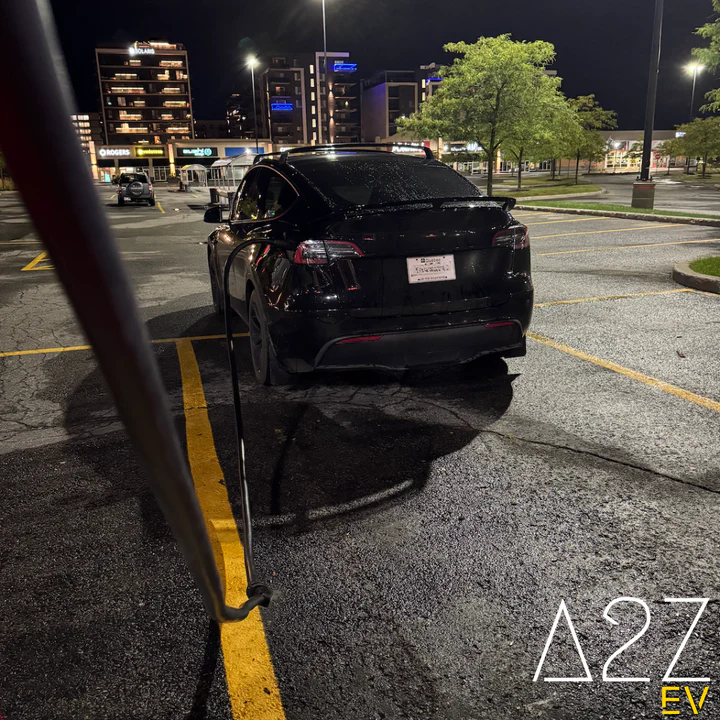
How It Works and Limitations
The extension cable functions as an intermediary between the Tesla Supercharger and the EV, effectively extending the reach of the charging cable to accommodate different vehicle designs. The setup is straightforward one end of the extension connects to the Supercharger, while the other end plugs into an (sold separately) Adapter that fits into the EV’s charging port.

Maximum Charging Power
- Tesla Superchargers (V3) can deliver up to 250 kW of power for Tesla vehicles.
- With an extension cable: there may be some power loss due to additional resistance and potential heat buildup, but a well-engineered cable should theoretically support 150–200 kW if designed properly.
Advantages of the Extension Cable:
- Increased Flexibility: Helps drivers park in a more natural position, even if their charge port location differs from Tesla’s standard design.
- Better Accessibility: Particularly useful for EVs with rear-mounted charge ports or those hindered by Supercharger positioning.
- Improved Usability at Busy Stations: Allows more EVs to utilize Tesla’s Supercharger network, reducing congestion issues.
Limitations to Consider:
- Potential Charging Speed Reduction: Additional resistance in the cable may lead to minor efficiency losses, slightly extending charging times.
- Heat Dissipation Issues: The added length of the cable may generate more heat, requiring robust thermal management to prevent overheating.
- Physical Bulk: The extension cable may be cumbersome to carry and store, requiring careful handling.
- Tesla’s Approval Uncertain: While effective, its long-term adoption depends on Tesla’s willingness to accommodate third-party accessories within its network.
Will this work in Europe?
No. I am sorry to inform you that although this is an amazing solution for people with non Tesla EV’s in America at this time the company did not announce a European CCS version of the extension cable. You can find CCS extensions on platforms like Amazon, Alibaba and AliExpress but these come with limited to no warranty or quality certifications.
Conclusion
A2Z EV’s initial sell-out indicates strong demand for their extension cable, positioning it as a potential game-changer in the market. To ensure long-term success, maintaining a positive relationship with Tesla or ideally securing an official endorsement will be crucial. Such a partnership could solidify the product’s credibility and enhance adoption among EV drivers facing challenging charging situations.
Sadly in Europe we will have to wait for a trust worthy solution for CCS charge cables at V2 and V3 Superchargers. A reputable company developing a compatible extension cable could improve fast-charging accessibility and prevent frustrated drivers during rush hour waiting for a space that aligns with a stall.
Check out this video here by the YouTube channel State Of Charge. In this video Tom Moloughney speaks to A2Z EV’s CEO Amin Zitore and Robert Powell who is an engineer on the project.
